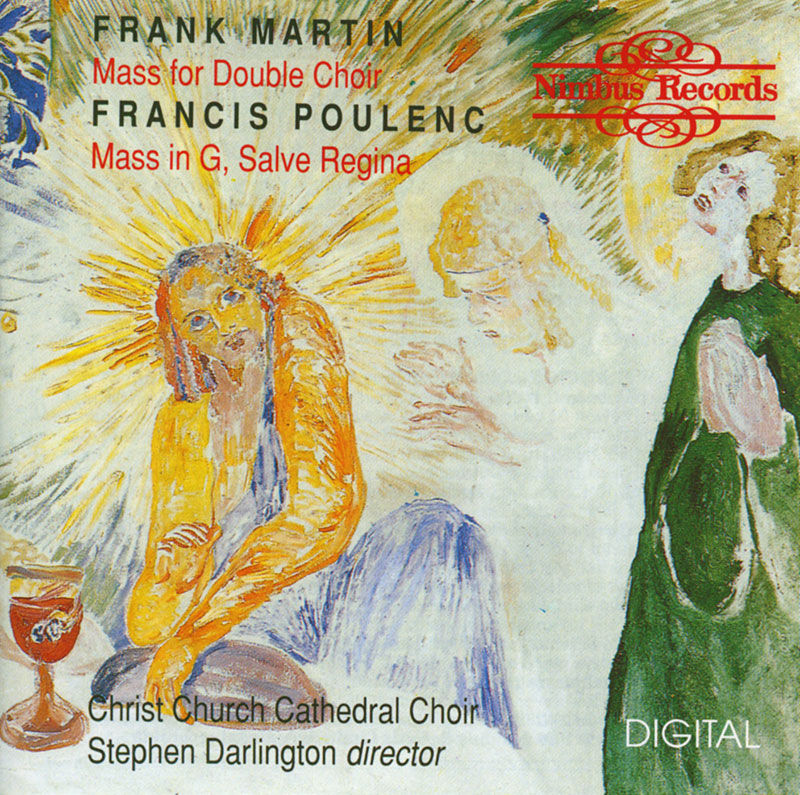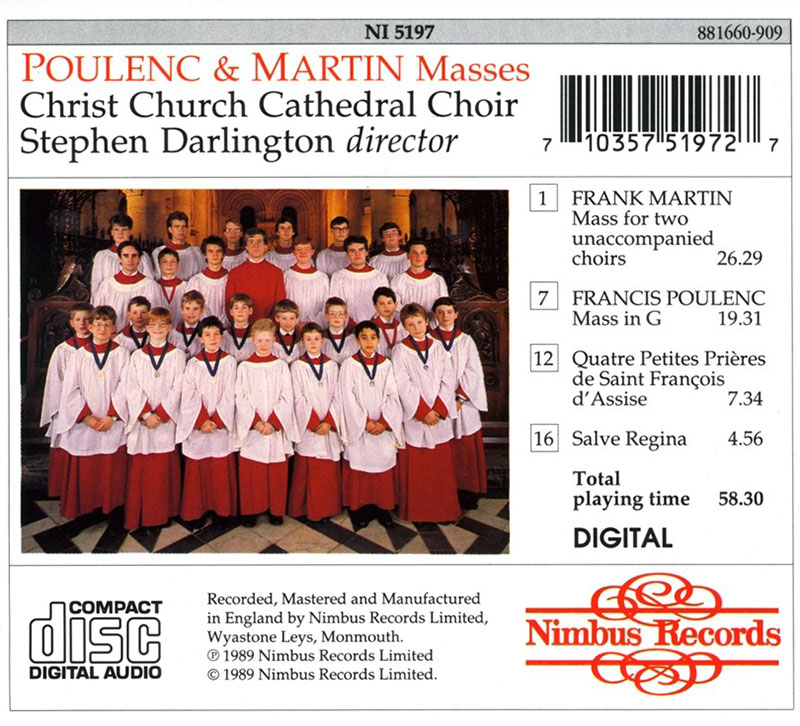Logowanie
Mikołaj - ten to ma gest!
Elton John, The Mamas & The Papas, Cat Stevens, Rod Stewart, Bobbie Gentry, Stevie Wonder, Engelbert Humperdinck
Memory Lane
Edycja Numerowana - 1000 egzemplarzy w skali światowej
RACHMANINOV, Eiji Oue, Minnesota Orchestra
Symphonic Dances / Vocalise
Best Recordings of 2001!!! NAJCZĘŚCIEJ KUPOWANA PŁYTA Z RR!
Karnawał czas zacząć!
Music of Love - Hi-Fi Latin Rhythms
Samba : Music of Celebration
AUDIOPHILE 24BIT RECORDING AND MASTERING
CHOPIN, LISZT, DEBUSSY, DVORAK, Gerhard Oppitz
Dances romantiques - A fantastic Notturno
Wzorcowa jakość audiofilska z Clearaudio
Winylowy niezbędnik
ClearAudio
Double Matrix Professional - Sonic
najbardziej inteligentna i skuteczna pralka do płyt winylowych wszelkiego typu - całkowicie automatyczna
POULENC, MARTIN, Christ Church Cathedral Choir, Oxford, Stephen Darlington
Mass for Double Choir / Mass in G / Salve Regina

- 1 Frank Martin, Mass for 2 unaccompanied choirs I Kyrie 5.12
- 2 II Gloria 5.20
- 3 III Credo 6.23
- 4 IV Sanctus 2.21
- 5 V Benedictus 1.50
- 6 VI Agnus Dei 4.36
- 7 Francis Poulenc, Mass in G major I Kyrie 4.08
- 8 II Gloria 4.26
- 9 III Sanctus 2.21
- 10 IV Benedictus 3.49
- 11 V Agnus Dei 4.47
- 12 Quatre Petites Prieres de Saint Francois d'Assise I Salut, Dame Sainte 2.28
- 13 II Tout puissant, tres saint 1.32
- 14 III Seigneur, je vous en prie 1.28
- 15 IV O mes tres chers freres 2.06
- 16 Motet: Salve Regina 4.56
- Recorded on 27-28 February, 1989 in Dorchester Abbey, Oxfordshir
- Christ Church Cathedral Choir, Oxford - choir
- Stephen Darlington - conductor
- POULENC
- POULENC
- MARTIN
"Nimbus help us to redress the chronological perspective by presenting Martin's little-known Mass, mainly of 1922, alongside Poulenc's Mass of 1937: more importantly, in so doing they (well, Stephen Darlington primarily) have enriched the catalogue with a work that is not only masterly in the technique of enriched the catalogue with a work that is not only masterly in the technique of its a cappella eight-part writing but immensely impressive and moving as an artistic experience ... everything here is sung with total security and artistic finish." Lionel Salter, Gramophone Reviews Because Frank Martin swam into the public's awareness only in the 1940s, with works like Le yin herbé and the Petite symphonie concertante, whereas Poulenc's name had been on everyone's lips from 20 years previously, we are apt to think of the latter as the earlier composer. He was in fact eight years Martin's junior, though both started composing at much the same time (in the second decade of this century). Nimbus help us to redress the chronological perspective by presenting Martin's little-known Mass, mainly of 1922, alongside Poulenc's Mass of 1937: more importantly, in so doing they (well, Stephen Darlington primarily) have enriched the catalogue with a work that is not only masterly in the technique of its a cappella eight-part writing but immensely impressive and moving as an artistic experience. At this period of his life Martin was still completing his lengthy studies in Zurich, Rome and Paris (the Agnus Dei was added in 1926, the year he returned to his native Geneva), and so the Mass predates his more familiar later idiom of freethinking dodecaphony. Its richly contrapuntal texture reveals a basic absorption of plainchant in the Kyrie, but elsewhere the setting is highly original and imaginative, especially in the sheer joy of the interweaving climbing phrases of "Et resurrexit" and the impressionist bell-sounds of "Sanctus". It is splendidly sung, with great flexibility and feeling for phrase, by the Christ Church Cathedral Choir, and recorded with just the right amount of reverberation. In the better-known Poulenc repertory the choir also offer some distinguished singing. With more forward microphone placing than Conifer gave their Cambridge rivals (a particular advantage in the St Francis pieces, where the Trinity voices were too distant: here tone is fresher and words clearer—note the expressive "Le plaisir est court, la peine éternelle") the choir's command of legato phrasing, and the youthful sound of the trebles, can be fully appreciated, as in the Salve regina. The Mass, like everything here, is sung with total security and artistic finish: A fine disc which deserves to be widely heard. L.S. Gramophone.net





























